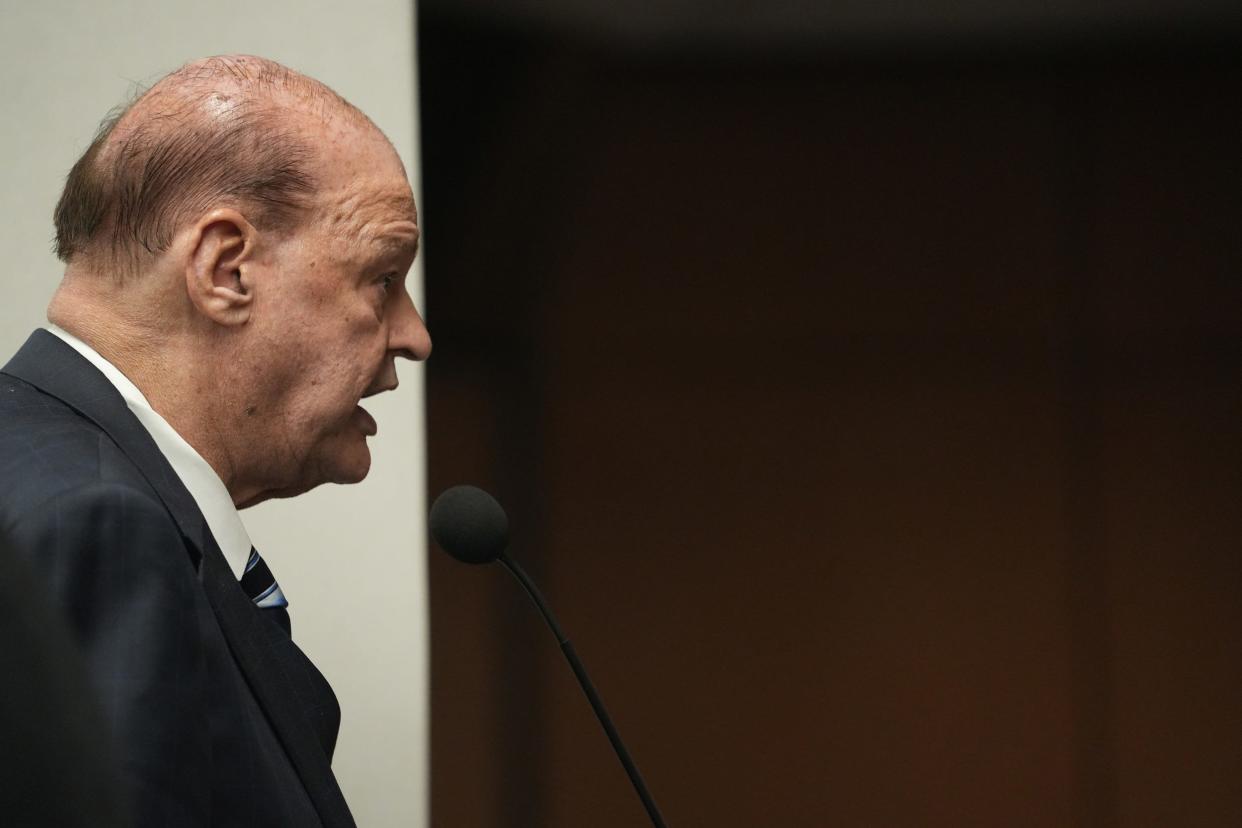4 ways Arizona schools chief Tom Horne is wrong about dual language learning

- Oops!Something went wrong.Please try again later.
- Oops!Something went wrong.Please try again later.
Arizonans should be very concerned about a looming constitutional crisis between Superintendent Tom Horne and Attorney General Kris Mayes — a crisis that deeply impacts tens of thousands of students.
The crisis is a reprise of Horne’s thwarted attacks on an ever-growing population of Latino students (and almost a third of Arizona residents), his heavy-handed approach to education law and his repeated abuse of taxpayer funds.
In a recent letter to Mayes published on the Arizona Department of Education website, Horne refuses to abide by her guidance that he must not block English Learner students from Dual Language Immersion (DLI) models that have been approved by the State Board of Education.
He claims DLI violates Proposition 203 passed by voters in 2000.
He states that he intends a legal challenge again — a threat that could cost taxpayers hundreds of thousands of dollars. (Under Horne’s first watch as superintendent, from 2003 to 2011, the state had paid more than $5 million to defend education requirements for English Learners.)
1. Lawmakers can 'further the purpose'
My organization spent several years researching this issue before we championed a bill (Senate Bill 1014) that unanimously passed the Republican-majority Legislature and was signed into law by Gov. Doug Ducey in 2019.
Teaching students to learn English in English and then teaching them a similar amount of content in another language does not violate Proposition 203, for four clear reasons.
First, and simplest, is that another voter-approved ballot measure, Proposition 105, states that a ballot initiative can be amended by a three-fourths vote of the Legislature to “further the purpose” of the law.
This occurred in 2019, as SB 1014 ensured that “all children in Arizona public schools shall be taught English as rapidly and effectively as possible.”
Legally speaking, this should be enough.
However, even though he doesn’t have the authority to do so, Horne added administrative barriers to English learners participating in dual language immersion for no clear, rational reason.
Current law allows schools to select the right model of instruction for their students, whom they know best, from the models approved by the Board of Education.
Horne is attempting to interfere not only with the board’s determination of the list of appropriate models, but also with schools’ choices from that list.
2. Voters wanted a temporary transition
A second key issue is that Proposition 203 proscribes “Sheltered English Immersion” (SEI) as a “temporary transition period not normally to exceed one year.”
The legislative council analysis used in the 2000 voter pamphlet also indicates SEI should be used “during a temporary transition period.”
Voters clearly intended a very short transition period for students to be in Sheltered English Immersion segregated classrooms, not the long, drawn-out segregation that occurred.
This is the model that Horne has said he wants to force on schools.
3. Students learn English in English
Another misread by Horne has to do with his interpretation of a prohibition of bilingual education for English learners.
Proposition 203 defines bilingual education as “a language acquisition process for students in which much or all instruction … [is] in the child’s native language other than English.”
In Dual Language Immersion that is not the case. The English language acquisition process is taking place in English.
4. Immersion wasn't supposed to be all day
Finally, Proposition 203’s definition of Sheltered English Immersion, which states “nearly all classroom instruction is in English … no subject matter shall be taught in any language other than English,” is specifically referring to SEI.
After Proposition 203 passed, the Board of Education defined Sheltered English Immersion time as a 4-hour block — not the whole school day. This was reduced in 2019 to a 2-hour block.
Thus, what happens outside of that block has no bearing on Proposition 203.
Education official: Dual language is the inferior way to teach
A school can teach Spanish immersion, or Mandarin immersion, etc. to any student — even if that student participated in an “English only” section earlier in the day.
If Proposition 203 meant the full school day, no foreign language classes could ever be taught.
Horne shouldn't defend a double standard
Horne sends up a red herring when claiming that parents can simply apply for a waiver for their child to participate in Dual Language Immersion.
The requirements are quite narrow: the student must be at least 10 years old, a special education student or already proficient in English. This is unfair to children who can’t fit into these limited categories.
It is also worth noting that private schools receiving publicly funded ESA vouchers don’t have to follow any of Horne’s proclamations or jump through his bureaucratic hoops.
They can teach — and any parent can choose — a full day in French, Spanish, Mandarin or any language they want.
This seems like a questionable double standard.
And a pretty weak basis to pursue an expensive legal challenge.
Rebecca Gau is the Executive Director of Stand for Children Arizona, a non-profit education advocacy organization. Reach her at rgau@stand.org.
This article originally appeared on Arizona Republic: Tom Horne attacks lessons for English learners without knowing the law

